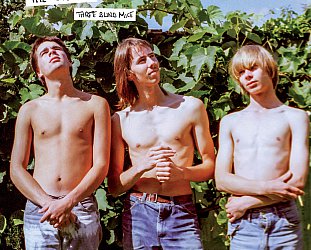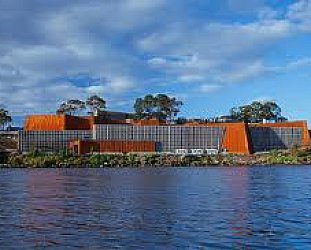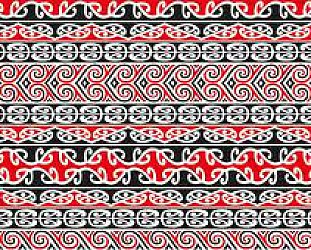Graham Reid | | 5 min read

Although Peter Lewis also noted the
Windy City, the Garden City and Dunedin (rhymes with “freezin' “)
in his classic celebration of New Zealand rock'n'roll scene Four
City Rock, he kicked off
most convincingly with his salute to Auckland – a city which has
long been the alluring end of a brightly coloured rainbow for
entertainers.
From jazz musicians in the 20s and
30s coming to play in the Orange Ballroom and the Civic, through to
Maori musicians in the 50s, then the rock'n'roll generation following
Johnny Devlin (“the Wanganui Elvis”) to the bright lights and
dark nightclubs of the big smoke, entertainers of all persuasions
have inevitably made their way to Auckland.
This was where there were venues,
music stores, recording studios, professional if sometimes dodgy
promoters, television studios and talent agencies, like-minded
fellow-travellers and most importantly, an audience.
Right across the city, from the
Dixieland Ballroom on Queen St to Coronation Hall in Pt Chevalier,
from the Moulin Rouge in Remuera to the Click-Clack Cabaret in
Newmarket – and Ye Olde Pirate Shippe in Milford -- Auckland was
where that exciting new sound called jazz first got a foothold in the
20s and 30s.
The orchestra pit of the
sophisticated Civic Theatre – which opened in late 1929 –
provided employment for decades of musicians, and clubs like the
Peter Pan were where they could go for after-hours “entertainment”.
Auckland must have seemed very
glamorous and racy to those living in the provinces – and so they
too came, generation after generation of them. And a significant
percentage of them Maori as part of the drift, then rush, to big
urban centres in the post-war period.
The huge Maori Community Centre
which opened across from Victoria Park at the end of the 40s (long
since demolished) became a meeting ground for musicians, and in the
50s rock'n'roll got a foothold in the milkbars across the city.
The Queen City was calling and down
in Christchurch Max Merritt and the Meteors, and Ray Columbus and the
Invaders heard it. Both bands, after considerable local – but
localised – success, arrived in Auckland in late '62 and started
shaking the city at clubs like the Shiralee and the Oriental
Ballroom.
The following year with the Beatles
kick-starting pop music again, clubs were thriving and trying to
accommodate all the bands which were forming: the Shiralee, the Top
Twenty, the Platterrack (where the Dallas Four had a two year
residency), the Monaco, the Surfside in Milford, the short-lived
Beatle Inn with a resident band the Merseymen (who weren't) which
became the Latin Quarter, the Embers for jazz and folk fans . . .
Auckland had Eldred Stebbing's busy
recording studio (the Zodiac label on which early New Zealand
rock'n'roll like Haka Boogie
through to the La De Das appeared), it was where television shows
like Kevan Moore's snappy pop programme C'Mon
(7pm on a Saturday) and light entertainment showcases were made and
beamed to the nation, and church halls around the suburbs hosted
Saturday night dances.
The Mercury Theatre was drawing
large audiences, international acts of all persuasions played at the
Town Hall, St James and His Majesty's, restaurants and hotel bars
employed musicians and cabaret acts, and there were dozens of movie
theatres.
Radio Hauraki shook up the airwaves
from studios in central Auckland and a pirate ship in the Hauraki
Gulf that passed into legend.
The Queen City was booming and the
sound could be heard throughout the land. Diane Lee (to become Dinah
Lee) moved from Christchurch for a residency at the Top Twenty,
Larry Morris and the Hunter brothers of Dragon heard the call in
Taumuranui . . .
The punk movement in the late 70s
roared to life in pubs like the Windsor Castle and clubs such as
Zwines (above the old 1480 Village), and by the end of the 80s Roger
Shepherd, founder of Flying Nun, had relocated his business from
Christchurch to rooms on Queen Street because this was where the
music industry was.
The main offices of all the major
international record companies – and many independent ones such as
Ripper, Propellor, Pagan, Wildside/Southside, Tangata and others –
were in Auckland, a city which also had a Town Hall, Supertop,
Western Springs and Mt Smart for those massive international
concerts, the Powerstation and the Aotea Centre.
There were places to play – and
any number of people prepared to do so.
The Polynesian reggae of Herbs out
of Ponsonby, then much of the urban hip-hop of the 90s, came from the
streets of Auckland. This has filtered through much of Auckland's
music. Would Neil Finn have used Cook Island drummers on his Together
Alone album if he had lived
in Wellington?
And the sheer physical breadth of
the city allows us to speak of North Shore bands (from Push Push to
the Checks) as much as Westie rockers (Jan Hellriegel, and
Steriogram, two of whom came from Whangarei) or South Auckland
hip-hop (artists on Dawn Raid).
Auckland diverse cultural make-up
and geographic reach means there is a home for all newcomers, and
residents, in which they can practice their art in a supportive
environment. Although . . .
Some years ago I wrote a story for
the Herald (here) about the old clubs where rock and pop had got their start in
Auckland: The Jive Centre on Hobson St where Johnny Devlin played to
packed houses and recorded his first single Lawdy
Lawdy Miss Clawdy one
Sunday afternoon in '58; the Beatle Inn in Little Queen St; the
Shiralee which later became the Galaxie (where the Underdogs, Larry's
Rebels and others played); the Top 20 which Max Merritt opened in '63
and became the 1480 Village where the Pleazers and others made their
names; Charlie Grey's Island of Real on Airedale St where Hello
Sailor, Th'Dudes and Citizen Band made their noises; the Java Jive in
Ponsonby, Squid and The Box/Cause Celebre in High St which were hip
and fashionable in the 90s . . .
All of them – and many more
including His Majesty's and the Gluepot – were gone. The neglected
St James remains a blot on our conscience.
You could be nostalgic and weep for
the losses – but other venues, notably the Vector Arena, have
opened. The bands play on and every day musicians and entertainers of
all persuasion come to Auckland seeking . . .
What?
A shot on a reality show, a gig at
the King's Arms or to dance on the Aotea Centre stage, to be part of
the Comedy Festival or Pasifika . . .
A chance to shine under a
spotlight.
And the Queen City is still
calling.







post a comment